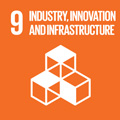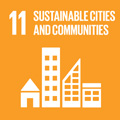- Docente: Enrico Corti
- Credits: 6
- SSD: ING-IND/08
- Language: English
- Moduli: Enrico Corti (Modulo 1) Enrico Corti (Modulo 2)
- Teaching Mode: Traditional lectures (Modulo 1) Traditional lectures (Modulo 2)
- Campus: Forli
- Corso: Second cycle degree programme (LM) in Mechanical Engineering for Sustainability (cod. 5980)
-
from Feb 17, 2025 to Mar 31, 2025
-
from Apr 07, 2025 to Jun 05, 2025
Learning outcomes
At the end of the course the student knows how to model sustainable powertrain systems, and how power can be controlled, to optimize efficiency and well-to-wheel emissions.
Course contents
1. Fundamentals of modeling and control
Simulink modeling
Plant modeling
Control Systems
Input/outputs and controllers structures
Analog Filtering, Digital Filtering
Other useful Data Processing Techniques
2. Powertrain Modeling
Vehicle Modeling
ICE Modeling
BEV Modeling
FCEV Modeling
Cooling system Modeling
3. Powertrain Control
ICE Control
BEV Control
FCEV Control
Hybrid Powertrains Control
Vehicle Control
Readings/Bibliography
Gasoline Engine Management - Robert Bosch - Wiley
Diesel Engine Management - Robert Bosch - Wiley
L. Eriksson, L. Nielsen; Modeling and Control of Engines and Drivelines; Wiley
Teaching methods
The topics of the course will be presented by means of Power Point slides (shared with the students on the data exchange area, accessible after the students enroll in the distribution list), data from the literature, data collected in the labs and Simulink models, that will be explored in details during the lectures.
The students will visit the Sustainable Mobility Laboratory , where sustainable powertrain solutions are being developed, based on internal combustion engines and fuel cells.
Assessment methods
Oral examination (one hour approximately).
The student will be asked to explain in details the structure of Simulink models for the simulation and control of:
- vehicle
- ICE
- Battery Electric Powertrains
- Fuel Cells Electric Powertrains
- Hybrid Powertrains
The exam consists of two questions regarding the Simulink models and one question regarding the first topic of the program. The two questions regarding the Simulink models may be replaced by a Simulink project proposed by the student, agreed with the professor.
Each answer will grant up to 10 points, the final grade is the sum of the points earned in the three questions. The project presentation wil grant up to 20 points. The program is available on the data exchange area at the end of the course.
The exam dates are communicated in advance through the AlmaEsami web platform of the University of Bologna. It is possible to enroll to the exam from 10 to 5 days before the exam date. At the time of the exam the student must show an identification document.
Teaching tools
The students will be given presentations referring to the topics listed in the program, as well as other material from the literature.
Simulink models explored during classes will be shared with the students.
Office hours
See the website of Enrico Corti
SDGs



This teaching activity contributes to the achievement of the Sustainable Development Goals of the UN 2030 Agenda.
